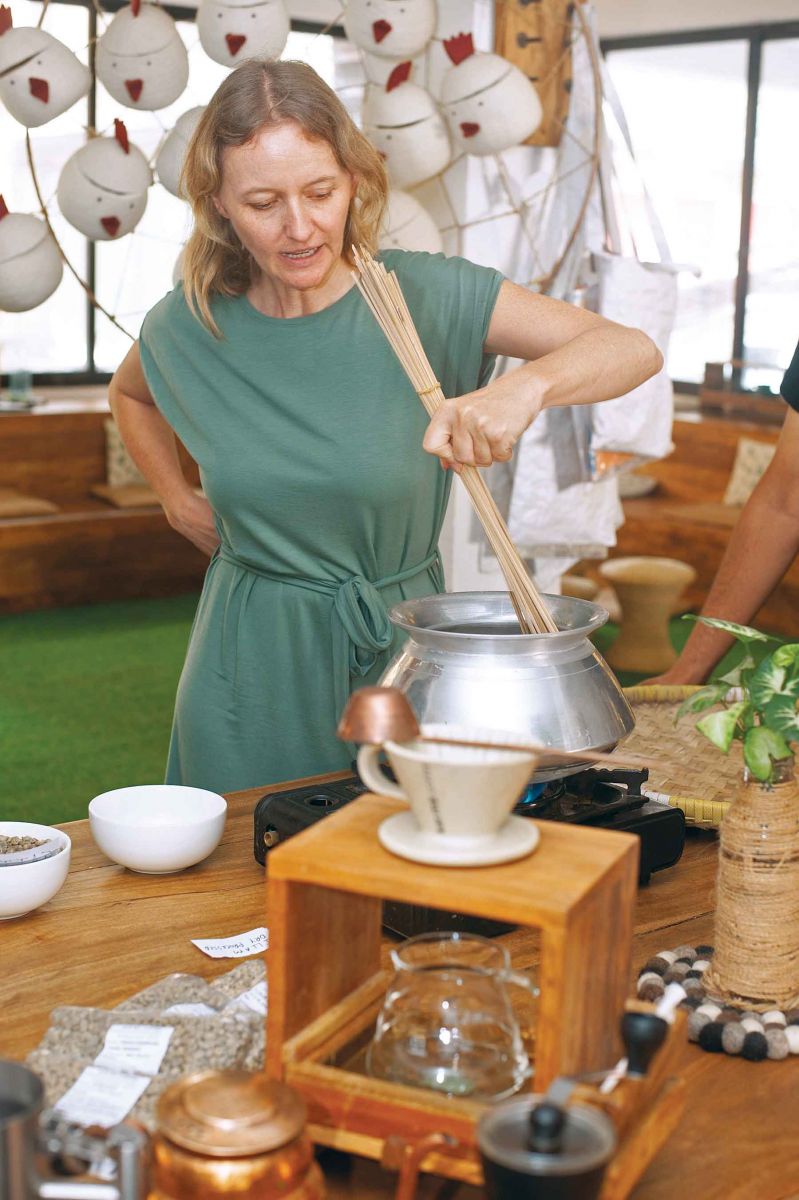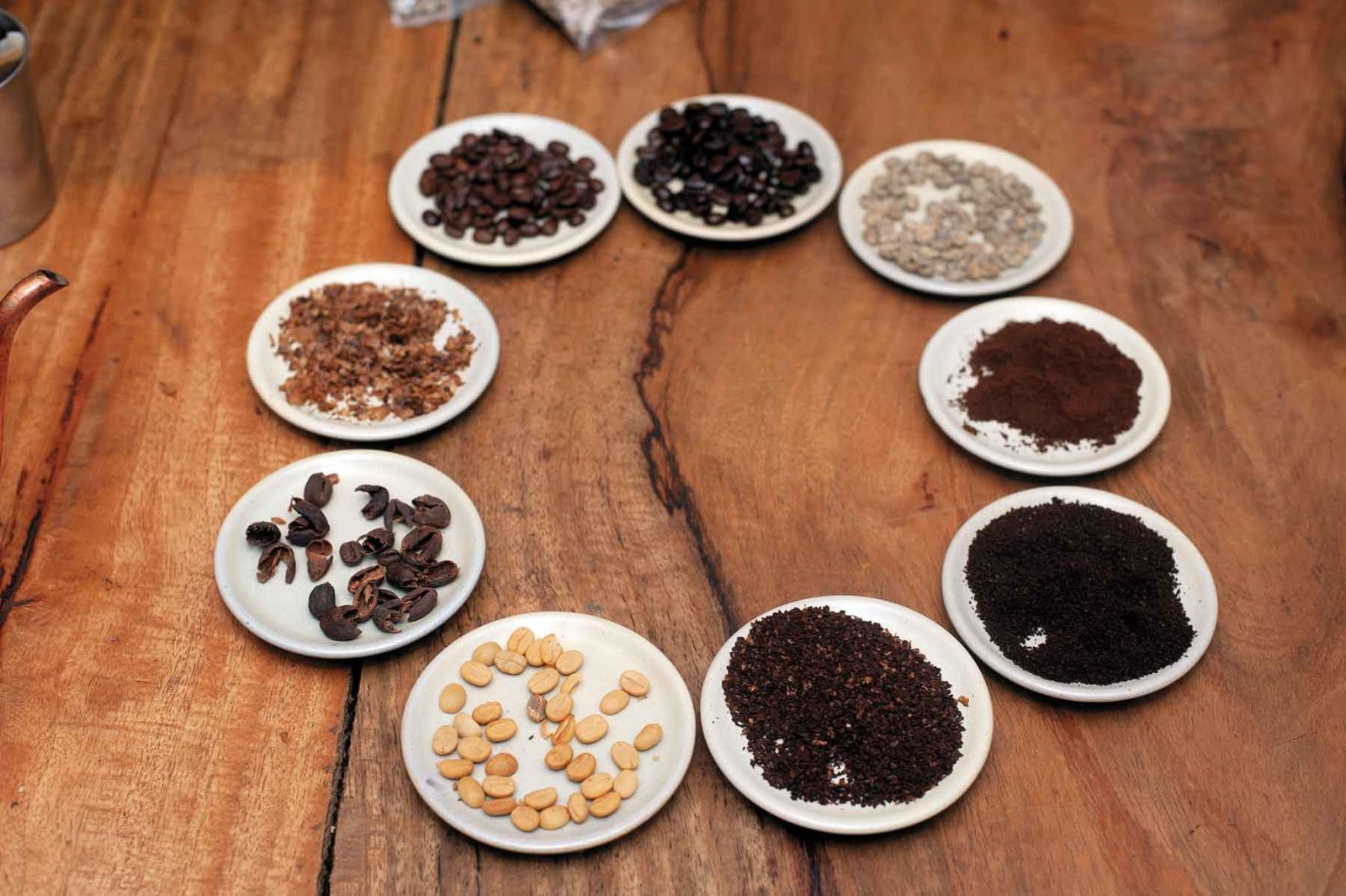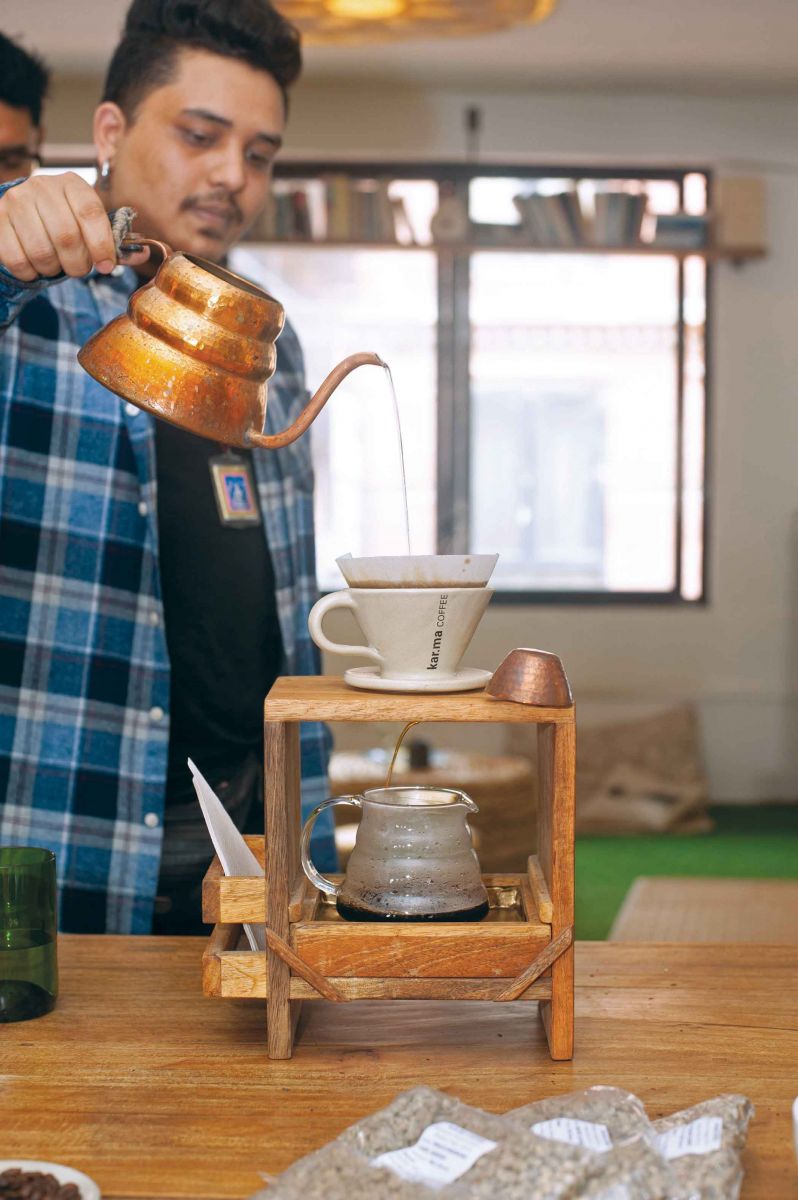
If you travel to a new country, then you must be sure to try the most local food and drinks, and to experience authentic life in Nepal, Socialtours is definitely a good choice for both local and foreign tourists. It offers a wide variety of Nepali experiences, but the one that attracted my attention the most was the Nepali coffee experience. When I heard about this experience from Socialtours, I was a little confused; Nepali tea is world-renowned, but personally, I was unfamiliar with Nepali coffee.
With this curiosity in mind, I took part in the two-hour Nepali coffee experience at Kar.ma Coffee. Our instructor, Birgit Lienhart-Gyawali from Austria, was a relaxed and welcoming person; she has been running Kar.ma Coffee for eight years and is a Nepali coffee expert.
As she explained to us, fifteen years ago, Nepal's coffee was mainly exported. Today, the demand for coffee is increasing, and there are about 10,000 coffee shops in Nepal. At present, Nepal produces about 500 tons of coffee a year, which is still a relatively small figure as compared to other coffee-producing countries. However, the quality of Nepali coffee is improving and Birgit believes that Nepali coffee has high potential and great development prospects for the future.
Producing coffee is not that difficult, but producing good quality coffee is highly demanding. It is graded, including the overall planting and production process of the coffee. In other words, from the moment that green beans are planted, every following step affects the taste of the coffee.
Currently, Kar.ma Coffee cooperates with more than 600 farmers and has strict requirements for growing and harvesting coffee beans. The coffee beans they purchase are from five districts of Nepal and are never mixed together with other different beans. In addition, they make annual visits to the countryside to ensure the quality of the beans they buy.
To make coffee taste good, farmers need to choose suited geographical conditions carefully. The beans are mainly grown in the mid-hill region of Nepal at an altitude of 900 m to 1800 m. Normally, the higher the altitude, the better the coffee tastes. Even though the altitude is changing due to climate change, the temperature of the area must be above zero.
Before planting coffee beans, it’s also important to test the pH value of the soil and consider the angle of the sun in addition to the altitude conditions. Then, farmers need to follow certain rules during the growing and picking process to ensure the quality of the beans. Coffee trees, for example, cannot grow higher than a person.
 The beans are harvested only once a year, and the harvest season lasts for 3-4 months, from the end of November to the end of March. Farmers must harvest every day to ensure the beans are picked at the right time. After gathering them, they bring the beans to a collector, where the beans are washed with water and the defective ones that float are discarded. The green beans remaining are further processed by methods including including the honey process, dry process, wet process and so on, each of which directly affects the flavor of the coffee.
The beans are harvested only once a year, and the harvest season lasts for 3-4 months, from the end of November to the end of March. Farmers must harvest every day to ensure the beans are picked at the right time. After gathering them, they bring the beans to a collector, where the beans are washed with water and the defective ones that float are discarded. The green beans remaining are further processed by methods including including the honey process, dry process, wet process and so on, each of which directly affects the flavor of the coffee.
The processed beans then need to be roasted, ground and brewed—ending with that delicious cup of coffee we all crave. After careful selection, the best beans end up at Kar.ma Coffee. Here we experienced authentic handmade coffee making, including the three main steps: roasting, grinding and filtering.
During the manual roasting phase, Birgit put the selected beans into a hot metal pot and used wooden sticks to continuously stir them. At this stage, the color and flavor of the beans changes significantly. One by one, we each took turns to stir the beans through the roasting process. A few minutes later, there was a cracking sound from inside the pot, like popcorn. It was just the beginning, and other beans scrambled to crack, eager to enter the next stage. At this stage, the coffee's characteristic aroma explodes.
After a simple process of filtering and removing the skins from the roasted beans, the next step, grinding, can proceed. Hand grinding tools were small, glass bottles with delicate grinding handles. After a few minutes of work, the beans are transformed into freshly ground coffee.
At the final stage, brewing, we put the ground coffee into a coffee filter in a stand and then used a copper pot to intermittently fill it with the appropriate amount of boiling water. The coffee is filtered through a paper filter into the glassware underneath. Just pour it into a coffee cup now, and the fresh handmade Nepali coffee is ready to taste.
 I've had countless cups of coffee in my life, but this is the first time I've seen the process unfold in its own way. It's amazing to watch the coffee beans turn into a cup of coffee by my hands. What had seemed straightforward suddenly became complicated and wonderful. What’s more, the coffee we made tasted pure and fresh. And even more impressively, all the filtered paper and coffee remains we used in this experience were not thrown away but recycled into cushions and lanterns that you can see in the store.
I've had countless cups of coffee in my life, but this is the first time I've seen the process unfold in its own way. It's amazing to watch the coffee beans turn into a cup of coffee by my hands. What had seemed straightforward suddenly became complicated and wonderful. What’s more, the coffee we made tasted pure and fresh. And even more impressively, all the filtered paper and coffee remains we used in this experience were not thrown away but recycled into cushions and lanterns that you can see in the store.
A cup of coffee in front of you is not only coffee but also contains numerous complicated processes, and even more than that it contains many people's stories. But it is also just a cup of coffee to some extent, a cup of coffee that makes your life enjoyable.
With its huge commercial value, Nepal’s coffee market is growing steadily, and is certainly here to stay. As Raj Gyawali said, many people need to realize that "Nepali coffee is also a thing."






